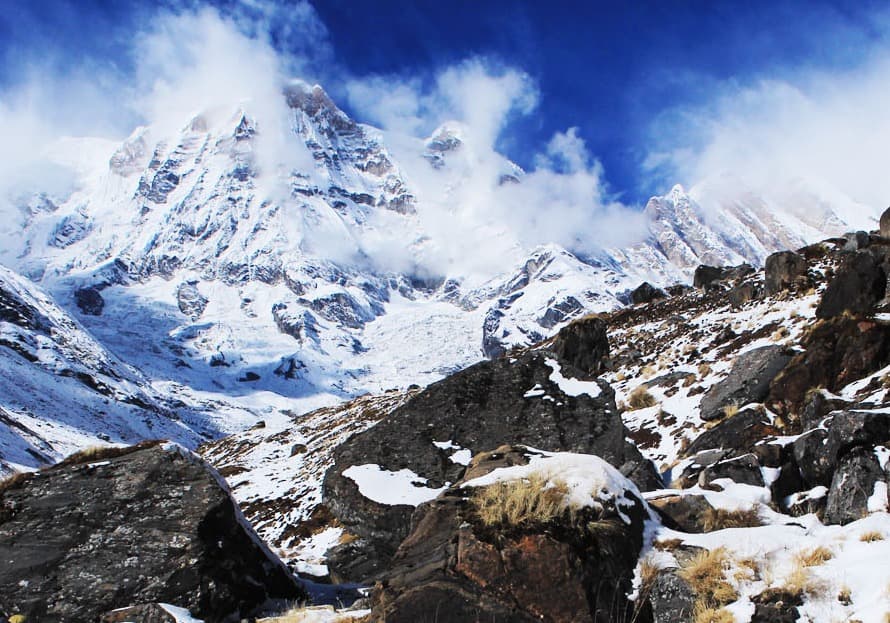
We pride ourselves on being the premier choice for adventurers seeking the perfect Ghorepani Poon Hill Trek Duration. Our expertly curated treks are designed to cater to both seasoned trekkers and those new to the mountains, offering a seamless blend of comfort, safety, and authentic experiences. With our deep local knowledge and commitment to excellence, we ensure that every aspect of your journey is managed with the utmost care. From luxurious accommodations to professional guide services, we provide an unparalleled trekking experience that showcases the best of the Annapurna region. Choose Luxury Holidays Nepal for your next trek to Ghorepani Poon Hill and discover why we are the best in delivering memorable Himalayan adventures.
Manageable Duration
The Ghorepani Poon Hill Trek Duration is highly regarded for its manageable duration, making it an exceptional choice for trekkers who are limited by time but still want to experience the thrill and beauty of the Himalayas. Here are the key points that highlight its convenient timeframe:
-
Short and Sweet: Typically spanning just 4 to 5 days, this trek fits perfectly into a week’s holiday, allowing ample time for both adventure and relaxation in nearby Pokhara before and after the trek.
-
Ideal for Beginners and Professionals: The shorter duration makes it accessible for beginners who might find longer treks daunting, yet it remains enjoyable for seasoned trekkers looking for a quick Himalayan experience.
-
Maximized Experience: Despite its brevity, the trek covers some of the most iconic and breathtaking viewpoints in the Annapurna region, including the famous sunrise at Poon Hill.
-
Efficient Use of Time: Each day’s trek is designed to maximize daylight hours, ensuring trekkers enjoy the scenery and reach comfortable lodgings well before dusk.
-
Flexibility: The short duration also allows for flexibility in travel plans, making it easier to combine this trek with other activities in Nepal, such as sightseeing, rafting, or even another trek.
This manageable duration is one of the primary reasons why the Ghorepani Poon Hill Trek is so popular, providing a fulfilling Himalayan trekking experience within a compact timeframe.
The Ghorepani Poon Hill Trek is celebrated for its spectacular panoramas that offer trekkers enchanting views of the Himalayan range. This is one of the most compelling reasons to embark on this trek, as the landscapes encountered are truly breathtaking. Here are the key highlights of the scenic vistas you can expect:
-
Poon Hill Sunrise: The trek's ultimate highlight is the early morning hike to Poon Hill, where you can witness an awe-inspiring sunrise. As the sun crests the eastern mountains, it bathes the snow-capped peaks of Annapurna and Dhaulagiri in golden hues, creating a dramatic and picturesque scene.
-
[block](25, 37)
-
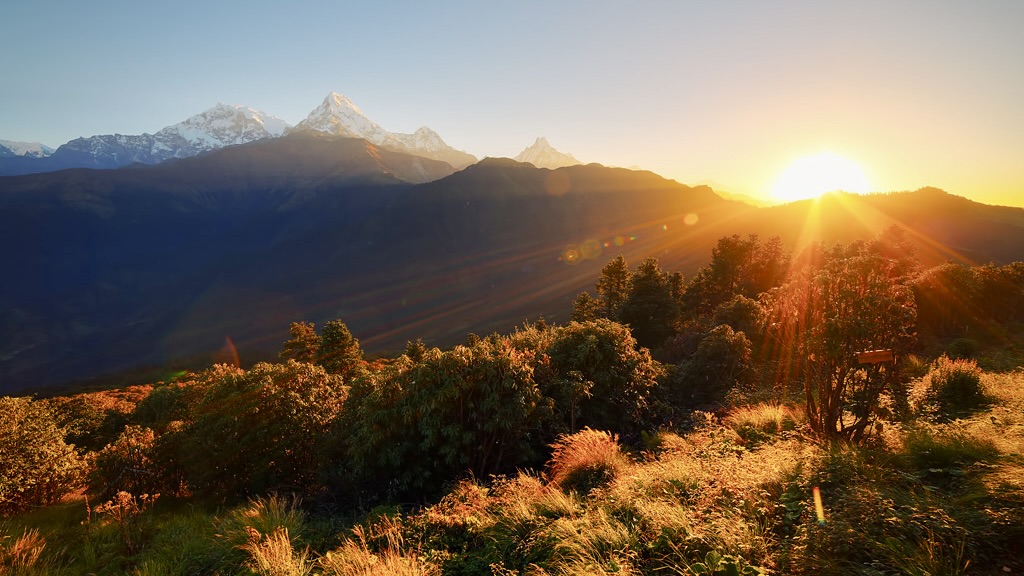
Poon Hill Sunrise - 360-degree Mountain Views: From the vantage point of Poon Hill, at an altitude of 3,210 meters, trekkers enjoy 360-degree views of more than 20 high peaks including Annapurna South, Annapurna I, Annapurna II, III, and IV, Dhaulagiri, and several others.
-
Layered Landscape Views: Throughout the trek, you will traverse through varied terrains, from lush rhododendron forests to charming villages. These layers add depth to the expansive mountain backdrops, enhancing the visual appeal of your trekking photos and memories.
-
Dynamic Light and Shadow: The interplay of light and shadow, as the day progresses, brings out the contours and textures of the mountains, offering dynamic and ever-changing views that captivate and delight photographers and nature lovers alike.
-
Annapurna Conservation Area: Trekking through this protected area, the natural environment adds to the sweeping vistas with well-preserved biodiversity and beautifully maintained trails, which make every turn and climb a pleasure.
These spectacular panoramas are integral to the Ghorepani Poon Hill Trek, providing not just a visual feast but also a deep, rejuvenating connection with nature. Whether you're an avid photographer, a nature enthusiast, or simply someone in search of peace, the vistas on this trek are sure to leave a lasting impression.
The Ghorepani Poon Hill Trek is not only a journey through some of Nepal’s most stunning landscapes but also a deep dive into the cultural richness of the Annapurna region. The trek offers a unique opportunity to engage with the local Gurung and Magar communities, providing a glimpse into their traditions, lifestyles, and hospitality. Here’s how the cultural richness enhances the trekking experience:
-
Ethnic Villages: As you trek through the paths winding around the Annapurna range, you pass through quaint villages such as Ulleri, Ghorepani, and Ghandruk. These villages are predominantly inhabited by the Gurung and Magar people, two of Nepal's indigenous ethnic groups known for their warm hospitality and rich cultural heritage.
-
[block](25, 37)
-

Gandruk Village -
Traditional Lifestyles: Observing the daily lives of the local people offers insights into their traditional agricultural practices, handicrafts, and ancestral customs. The well-preserved architecture of stone and wood houses in these villages also adds to the charm and historical significance of the area.
-
Cultural Interaction: Many teahouses and lodges along the trek are run by local families, providing trekkers with opportunities to interact with the hosts and learn about their culture firsthand. This interaction often includes sharing meals, and stories, and sometimes even participating in local dances and music.
-
Festivals and Traditions: Depending on the timing of your trek, you may have the chance to witness local festivals such as Dashain, Tihar, or the Maghe Sankranti. These festivals are celebrated with great enthusiasm and provide a colorful display of local rituals, traditional attire, and festivities.
-
Culinary Experience: The trek also introduces trekkers to the local cuisine, which includes dishes made from locally grown produce. Staple foods like dal bhat (lentil soup and rice), momo (dumplings), and tshampa (barley porridge) are not only nourishing for long days of trekking but also add an authentic flavor to the travel experience.
The cultural richness of the Ghorepani Poon Hill Trek thus offers more than just scenic enjoyment; it provides a profound appreciation for the ways of life that have been sustained in these mountains for generations, making the trek as enriching culturally as it is physically exhilarating.
Flora and Fauna
Flora
-
Rhododendron Forests: One of the most visually stunning features of the trek is the rhododendron forests. These forests are especially vibrant during the spring months (March to May) when the flowers bloom in brilliant reds, pinks, and whites, creating a mesmerizing landscape that seems almost surreal.
-
Diverse Vegetation: As the trek ascends through different ecological zones, from subtropical to alpine, trekkers witness a shifting panorama of plant life. This includes oak forests, bamboo groves, and alpine meadows, each supporting unique ecosystems.
Fauna
-
Bird Watching: The Annapurna region is a haven for bird enthusiasts, with over 450 species of birds, including the colorful Himalayan monal, blood pheasant, and various species of eagles and vultures. The diversity makes it a fantastic trek for ornithologists and casual bird watchers alike.
-
Mammals: While larger wildlife is less commonly seen, the area is home to species such as the Himalayan tahr, goral (a type of goat-antelope), and occasionally leopards. The lower forested areas can sometimes reveal smaller mammals like marten, Himalayan weasels, and pika.
Ecological Significance
-
Conservation Area: The Ghorepani Poon Hill trek falls within the Annapurna Conservation Area, Nepal's largest protected area. The conservation efforts here aim to preserve the natural environment and promote sustainable tourism practices that benefit local communities and the ecosystem.
-
Educational Opportunity: Trekking through this area offers educational insights into how diverse ecosystems function and why they are important to preserve. Local guides often share knowledge about medicinal plants and the roles various species play in the ecological balance of the region.
The flora and fauna of the Ghorepani Poon Hill Trek are integral to the overall experience, offering not just aesthetic delight but also a deeper understanding of the natural environment. This ecological diversity, combined with the stunning mountain scenery and rich cultural tapestry, makes the trek a holistic adventure for nature lovers.
Accessibility and Convenience
Easy Accessibility
-
Proximity to Pokhara: The trek begins just a short drive from Pokhara, Nepal’s tourism hub, which is well-connected by both air and road to Kathmandu. This close proximity allows trekkers to easily transition from urban amenities to pristine mountain trails.
-
Well-marked Trails: The trekking route to Poon Hill is well-trodden and clearly marked, reducing the risk of getting lost and making it easier for those who choose to trek without a guide. This well-maintained path is one of the reasons why it's one of the most popular treks in Nepal.
Convenience
-
Short Duration: Being a shorter trek, typically 4 to 5 days, it fits well into travelers' schedules who may be in Nepal for a limited time but still want to experience a high-altitude trek.
-
Developed Infrastructure: The trail boasts well-developed infrastructure with numerous comfortable teahouses and guesthouses, offering good lodging and food options. This makes it easier for trekkers to pack light, as they can rely on these facilities for basic necessities and meals.
-
Lower Altitude: The maximum altitude reached on the Ghorepani Poon Hill Trek is 3,210 meters (10,532 feet) at Poon Hill itself, which is considerably lower than many other Himalayan treks. This makes acclimatization easier and reduces the risk of altitude sickness.
Suitable for Varied Fitness Levels
-
Gradual Ascents: The ascents on this trek are relatively moderate compared to more strenuous treks, making it suitable for beginners and those not accustomed to high-altitude trekking.
-
Flexibility in Itinerary: The trek offers flexibility in how days are structured, which can accommodate trekkers’ preferences for longer or shorter hiking days. For those looking for an even more relaxed pace, it's easy to add extra days to the itinerary.
Family-Friendly
- Suitability for a Broad Age Range: The trek's gentle trails and lower altitude make it a good option for families with children and older adults who are in reasonable shape.
The combination of easy access, convenient trail facilities, moderate difficulty, and stunning natural beauty makes the Ghorepani Poon Hill Trek a standout choice for anyone looking to explore the Annapurna region comfortably and efficiently. This trek exemplifies a hassle-free Himalayan experience while still offering the depth of an immersive adventure in one of the world’s most beautiful mountain landscapes.
Moderate Difficulty
Elevation and Altitude
-
Manageable High Point: The highest point of the trek is Poon Hill itself, which stands at 3,210 meters (10,532 feet). This is relatively moderate compared to many other high-altitude treks in Nepal which often exceed 4,000 meters.
-
Gradual Ascents: Although there are some steep sections, most of the trek involves gradual ascents which are manageable for people with average fitness levels. The trekking days are reasonably short, generally lasting between 4 to 6 hours each day.
Terrain and Trail Conditions
-
Well-Maintained Paths: The trails on the Ghorepani Poon Hill Trek are well-trodden and maintained, minimizing the risk of difficult trekking conditions. This maintenance helps in reducing the physical strain, particularly on steeper climbs like the famous stone steps leading up to Ulleri.
-
Natural Staircases: While the ascent to Ulleri involves over 3,000 stone steps, which can be challenging, it is the most strenuous part of the trek. Once this section is completed, the remaining parts of the trek are less demanding.
Physical Requirements
-
Fitness Level: The moderate difficulty of the trek makes it suitable for individuals who are in good health and maintain regular physical activity. It is an excellent choice for first-time high-altitude trekkers as it provides a good introduction to trekking in the Himalayas without being overly taxing.
-
Daily Hiking Duration: Daily hikes of 4-6 hours mean that trekkers can take their time, enjoy the surroundings, and not feel rushed, which enhances the enjoyment and manageability of the trek.
Psychological Factors
-
Less Stress on Acclimatization: Due to the lower altitude compared to more extreme treks, there is a reduced risk of altitude sickness, which can be a significant concern on higher-elevation treks. This aspect makes the Ghorepani Poon Hill Trek less daunting, particularly for those who are concerned about the effects of high altitude.
-
Predictable Weather: Although mountain weather can be unpredictable, the well-defined trekking seasons (spring and autumn) generally offer stable and clear conditions, reducing the difficulty associated with adverse weather.
The Ghorepani Poon Hill Trek's moderate difficulty is one of its most appealing features, providing just enough challenge to make it rewarding without the extremes that come with more difficult treks. This balance makes it a favorite among a diverse group of trekkers, including families, solo travelers, and those simply looking for a short but fulfilling Himalayan experience.
Year-Round Adventure
The Ghorepani Poon Hill Trek stands out as a year-round adventure, providing unique and varied experiences across different seasons. Each season in the Annapurna region brings its own distinct flavors and challenges, making this trek adaptable to almost any time of year depending on what trekkers wish to experience. Here’s how the Ghorepani Poon Hill Trek changes with the seasons:
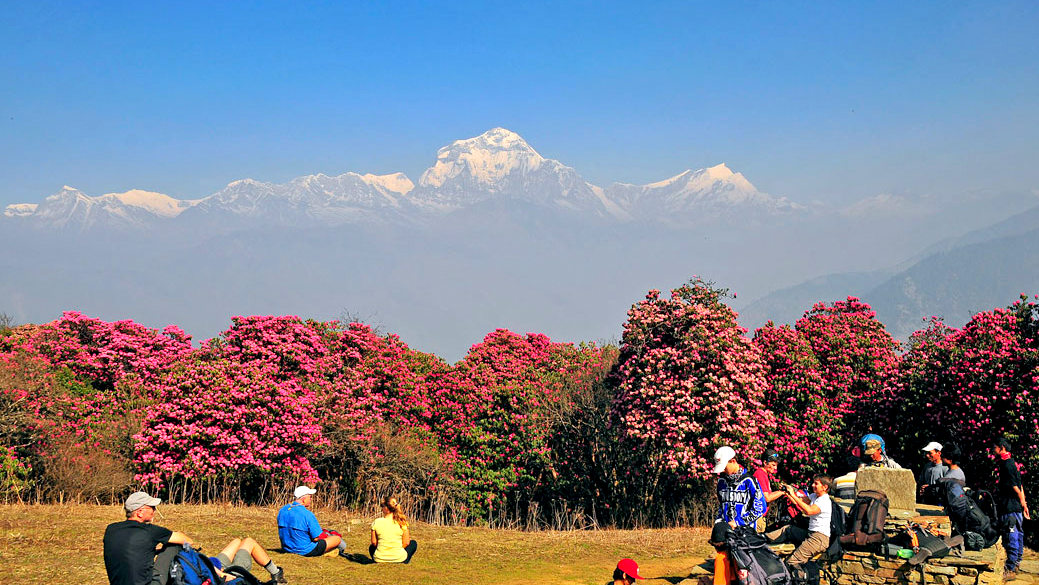
Spring (March to May)
- Floral Bloom: Spring is one of the best times to trek Ghorepani Poon Hill, as the rhododendrons, the national flower of Nepal, are in full bloom, covering the hills in spectacular shades of red, pink, and white.
- Clear Skies: The weather tends to be stable with clear blue skies providing excellent views of the Annapurna and Dhaulagiri ranges.
- Mild Weather: Temperatures during the day are comfortably warm, although nights can still be chilly.
Summer/Monsoon (June to August)
- Lush Greenery: The monsoon season brings rains that refresh the landscape, making the valleys and forests lush and vibrant with greenery.
- Fewer Crowds: This season sees fewer trekkers, offering a more solitary experience on the trails.
- Wildlife and Waterfalls: The increased water flow results in spectacular waterfalls, and the lush environment increases the likelihood of encountering wildlife.
Autumn (September to November)
- Peak Trekking Season: Autumn is another peak season for trekking due to its clear skies and moderate temperatures, similar to spring.
- Festive Atmosphere: Major Nepali festivals like Dashain and Tihar occur during this time, offering trekkers a glimpse into local celebrations and customs.
- Optimal Visibility: The post-monsoon clear air provides some of the best mountain views, making it ideal for photography.
Winter (December to February)
- Snow-Capped Peaks: The mountains are often snow-covered, offering stunningly crisp mountain vistas.
- Cooler Temperatures: While it can be quite cold, especially at night, the trekking routes are generally still accessible. Daytime trekking can be quite pleasant if properly equipped.
- Quiet Trails: With fewer trekkers on the path, winter can be a peaceful time to experience the trek.
Despite these seasonal variations, the Ghorepani Poon Hill Trek remains accessible and rewarding year-round. Each season offers unique experiences, whether it's the blooming rhododendrons in spring, the vibrant festivals of autumn, the solitude and lush landscapes of the monsoon season, or the tranquil, crisp conditions of winter. This versatility makes the Ghorepani Poon Hill Trek a perennial favorite, suitable for any trekker looking for a memorable Himalayan adventure regardless of the time of year.
Checklists for the Ghorepani Poon Hill Trek
Preparing for the Ghorepani Poon Hill Trek involves more than just enthusiasm; it requires careful packing to ensure you're equipped for the journey's challenges and beauty.
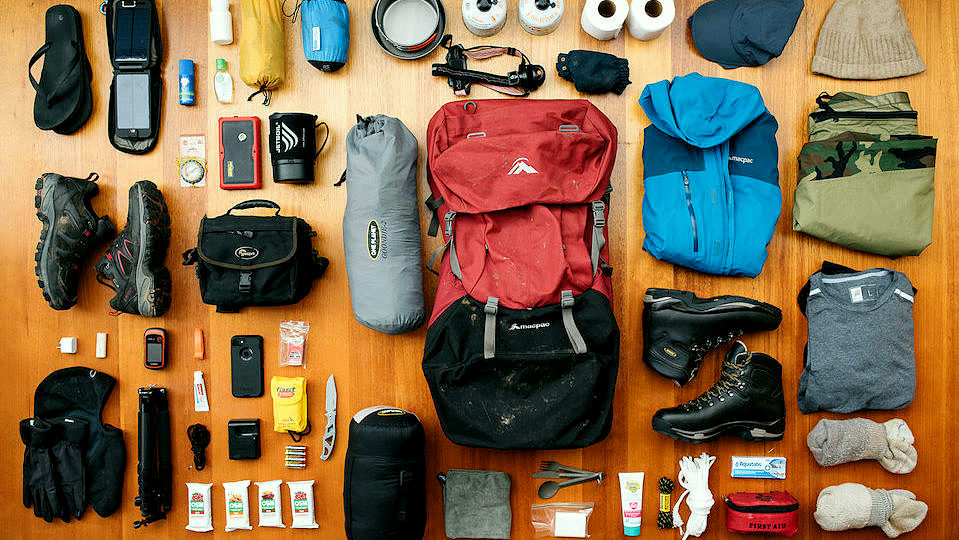
Essentials for the Trail
Trekking Backpack: A sturdy backpack with adjustable straps to carry your essentials comfortably.
Clothing
- Moisture-wicking base layers to keep you dry and warm.
- Insulated mid-layers like fleece jackets or down vests for added warmth.
- A waterproof and windproof outer layer (jacket and pants) to shield against changing weather conditions.
- Lightweight trekking pants and shorts.
- Long-sleeved shirts to protect against sun and bugs.
- Thermal gloves, a warm hat, and a scarf for colder sections of the trail
- Trekking Shoes: Sturdy and comfortable waterproof trekking shoes with good grip for varying terrains.
- Socks: A mix of moisture-wicking and warm socks to prevent blisters and keep your feet comfortable.
- Hat and Sunglasses: A wide-brimmed hat to shield from the sun and sunglasses with UV protection.
Safety and Health
- First Aid Kit: Including basic medications, adhesive bandages, antiseptic wipes, blister treatment, and any personal medications.
- Sunscreen: A high SPF sunscreen to protect your skin from the sun's rays.
- Insect Repellent: To guard against insects and ticks.
- Water Bottle: A reusable water bottle to stay hydrated along the trail.
- Headlamp/Flashlight: Essential for navigating in low-light conditions.
- Personal Identification and Insurance: Carry identification, travel insurance details, and emergency contact information.
Comfort and Convenience
- Sleeping Bag: A lightweight and warm sleeping bag suitable for the trek's conditions.
- Trekking Poles: Optional but beneficial for stability and reducing strain on your joints.
- Camera and Electronics: If you wish to capture stunning landscapes, ensure your camera or smartphone is fully charged.
- Chargers and Power Bank: Keep your electronics powered during the trek.
- Toiletries: Toilet paper, hand sanitizer, toothbrush, toothpaste, and biodegradable soap.
- Quick-Dry Towel: A compact towel that dries quickly after use.
Additional Considerations
- Cash: Carry Nepalese Rupees for purchasing items along the trek.
- Snacks: Energizing snacks like trail mix, energy bars, and chocolates.
- Guidebook/Map: A guidebook or map of the trail can be helpful for navigation and information.
- Book or Entertainment: Something to keep you entertained during downtime.
Packing for the Ghorepani Poon Hill Trek requires a balance between essential gear, safety considerations, and personal comfort. Be mindful of the changing weather conditions and the trek's altitude as you assemble your items.
Insurance for the Ghorepani Poon Hill Trek
When embarking on the Ghorepani Poon Hill Trek, ensuring your safety and well-being is of paramount importance. Travel insurance acts as a crucial safety net, providing coverage for unexpected events and emergencies that might arise during your journey.
Comprehensive Coverage
- Trip cancellations or interruptions due to unforeseen circumstances like illness, injury, or family emergencies.
- Emergency medical expenses, including hospital stays, doctor's fees, and medication.
- Evacuation and repatriation to your home country in case of severe injury or illness.
- Lost, stolen, or damaged belongings, including trekking gear and personal items.
- Flight delays missed connections, or trip rescheduling due to unforeseen factors.
Altitude-Related Considerations
As the Ghorepani Poon Hill Trek involves ascending to altitudes of around 3,210 meters at Poon Hill, altitude sickness can be a concern for some trekkers. Travel insurance that covers altitude-related emergencies ensures you'll receive prompt medical attention and evacuation if needed. Make sure to check the policy details to confirm altitude sickness coverage.
Selecting the Right Insurance
- Coverage Limits: Ensure the coverage limits align with the potential costs of medical treatment, evacuation, and any trip-related expenses.
- Medical Evacuation: Confirm that the policy covers medical evacuation by helicopter or other means, as this is essential for remote trekking destinations.
- Adventure Sports Coverage: Verify if the policy covers trekking and adventure activities at higher altitudes.
- Pre-Existing Conditions: If you have pre-existing medical conditions, check if they are covered by the policy.
- Duration and Itinerary: Ensure the insurance covers the entire duration of your trek, including any additional side trips or acclimatization days.
Investing in travel insurance for the Ghorepani Poon Hill Trek is a safety investment that provides peace of mind as you venture into the Himalayas. With the right insurance coverage, you can focus on the breathtaking landscapes, cultural experiences, and unforgettable moments that define your Himalayan adventure.
Luxury Ghorepani Poonhill Trek
Ghorepani Poon Hill Trek with Luxury Holidays Nepal transforms your journey into a luxurious and captivating adventure. As a renowned trekking and tour operator, Luxury Holidays Nepal specializes in curating exceptional experiences that blend comfort, exploration, and cultural immersion.
Tailored Itineraries: Luxury Holidays Nepal crafts meticulously planned itineraries that cater to your preferences and requirements. The Luxury Ghorepani Poon Hill Trek is designed to offer a balance between trekking, relaxation, and exploration. You'll experience the trek's natural beauty and cultural richness while enjoying the comfort of carefully selected accommodations and services.
Luxurious Accommodations: During the trek, you'll be accommodated in the finest luxury lodges and teahouses, carefully chosen for their comfort, hospitality, and panoramic views. Imagine unwinding in cozy rooms with modern amenities while gazing at the majestic Himalayan peaks from your window. These accommodations provide a serene haven to rejuvenate after a day of trekking.
Private Transport and Guides: We ensure your journey is seamless and hassle-free from start to finish. You'll enjoy private transportation, ensuring a comfortable and efficient transfer between destinations. Accompanied by experienced and knowledgeable guides, you'll receive personalized attention, insightful information, and assistance every step of the way.
Gourmet Dining: The Luxury Ghorepani Poon Hill Trek pampers your palate with gourmet dining experiences. Indulge in delectable local and international cuisines prepared with fresh ingredients. From hearty breakfasts to nourishing dinners, each meal is a culinary journey that complements your trekking adventure.
Cultural Encounters: We add a layer of authenticity to your trek by facilitating meaningful interactions with local communities. Engage with villagers, participate in traditional activities, and gain insights into the local way of life. These cultural exchanges create memorable moments and deepen your connection to the region.
Flexibility and Personalization: One of the hallmarks of Luxury Holidays Nepal is its commitment to flexibility and personalization. The Luxury Ghorepani Poon Hill Trek can be tailored to your preferences, whether you seek additional acclimatization days, side excursions, or specific experiences. The journey is crafted to match your interests and pace, ensuring an experience that resonates with your spirit.
Ghorepani Poon Hill Heli Trek
If you're seeking a unique blend of adventure, luxury, and breathtaking landscapes, the Ghorepani Poon Hill Heli Trek offered by Luxury Holidays Nepal might be your ideal choice. This exclusive experience combines trekking, helicopter flights, and cultural immersion, promising an unforgettable journey.
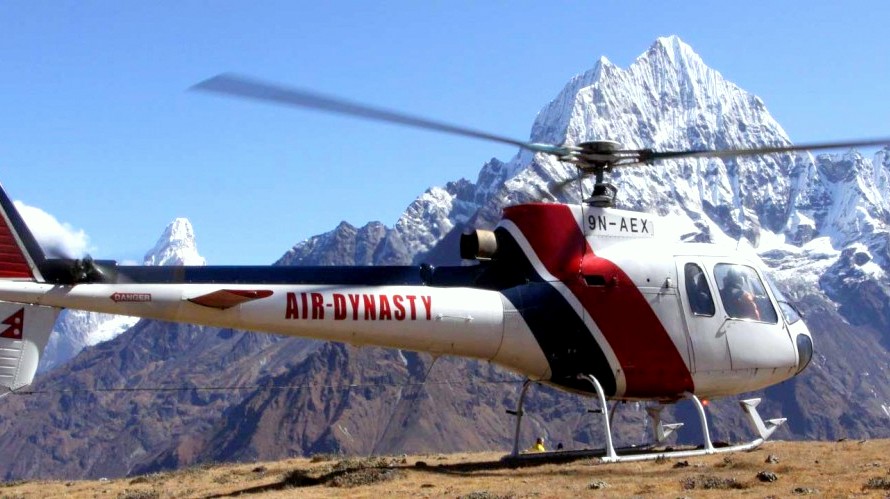
Safety and Comfort with Luxury Holidays Nepal
Safety is our top priority. The trek adheres to strict safety protocols, including altitude acclimatization, experienced guides, and emergency plans. The helicopter flights are operated by skilled pilots with years of experience, ensuring safe and smooth transfers between key points.
Highlights of the Ghorepani Poon Hill Heli Trek
Poon Hill Sunrise: Witnessing the sunrise from Poon Hill, with the Annapurna and Dhaulagiri mountain ranges illuminated in hues of gold and pink, is a highlight you won't forget.
Helicopter Flights: Experience the thrill of flying over picturesque landscapes, from the terraced fields to the lush forests, and enjoy bird's-eye views of the Himalayas.
Cultural Encounters: Engage with local communities, experience their way of life, and gain insights into their traditions.
Helicopter Ride Back: After completing the trek, your adventure concludes with another exhilarating helicopter ride back to Pokhara. This flight allows you to admire the landscapes you've trekked through from a different perspective, creating a sense of accomplishment and an unparalleled aerial experience.
The Ghorepani Poon Hill Heli Trek with Luxury Holidays Nepal is an invitation to experience the Himalayas in a truly unique way. With safety as a cornerstone and luxury as a hallmark, this trek allows you to savor the best of both worlds – adventure, and indulgence.
FAQs: Ghorepani Poon Hill Trek Duration
Q: How long does the Ghorepani Poon Hill Trek take on average?
A: The Ghorepani Poon Hill Trek typically takes around 4 to 5 days to complete. However, this can vary depending on factors such as your pace, acclimatization needs, and side trips you might want to take.
Q: Can the trek duration be customized?
A: Absolutely. The trek duration can be customized to your preferences. You might choose to take additional acclimatization days, explore side trips, or adjust your pace based on your fitness level and interests.
Q: Are there shorter or longer itineraries available?
A: Yes, trekking operators often offer variations of the Ghorepani Poon Hill Trek itinerary. Some might offer shorter options for trekkers with limited time, while others might include additional detours for a more extensive experience.
Q: Is the trek suitable for beginners?
A: Yes, the Ghorepani Poon Hill Trek is considered suitable for trekkers of varying experience levels, including beginners. The relatively moderate difficulty level and well-established trails make it accessible to a wide range of people.
Q: How can I prepare for the trek's duration?
A: Physical fitness is key. Engage in cardiovascular exercises, strength training, and hiking to build stamina. Mental preparedness is equally important; adopt a positive attitude and be open to adapting your pace as needed.
Q: What about altitude sickness?
A: Altitude sickness is a concern when trekking in the Himalayas. Proper acclimatization is crucial to prevent altitude-related health issues. Many itineraries include gradual ascents and rest days to aid acclimatization.
Q: What's the best time to undertake the trek?
A: The Ghorepani Poon Hill Trek is doable year-round, but the best seasons are spring (March to May) and autumn (September to November) when the weather is favorable and the skies are clear.
Q: Can I add side trips to the itinerary?
A: Absolutely. Many trekkers opt to include side trips to destinations like Ghandruk Village or Tadapani to enhance their experience. These detours can extend the trek's duration but offer unique rewards.
Q: Do I need a guide or can I trek independently?
A: While it's possible to trek independently, having a knowledgeable guide enhances your experience. Guides provide insights into local culture, ensure safety, and offer assistance if any issues arise.
Q: Is travel insurance necessary for the trek?
A: Yes, travel insurance is highly recommended. It covers unforeseen events like medical emergencies, trip cancellations, and evacuation. Make sure the policy includes coverage for trekking and altitude-related incidents.
Q: Can I extend my stay in the area after the trek?
A: Absolutely. Many trekkers choose to explore Pokhara, Kathmandu, or other areas after completing the trek. Trekking operators often assist in arranging post-trek activities and accommodations.
The following list includes the numerous trekking choices available in the Annapurna Region Trekking Packages
Ghorepani Poon Hill Trek - 10 Days
Ghorepani Poon Hill Sunrise Trek with Chitwan Jungle Safari - 12 Days
Annapurna in Luxury - 11 Days
Ghorepani Poon Hill Luxury Trekking with optional Chitwan Safari - 10 Days
Annapurna Circuit Trek - 17 Days
Annapurna Base Camp Heli Trek - 9 Days
Mardi Himal Trek - 12 Days
Annapurna Base Camp Trek - 10 Days
Annapurna Base Camp Trek - 15 Days
If you need any further information, please contact us by email: at [email protected], Phone: at +977- 985 100 5129 (WhatsApp)




